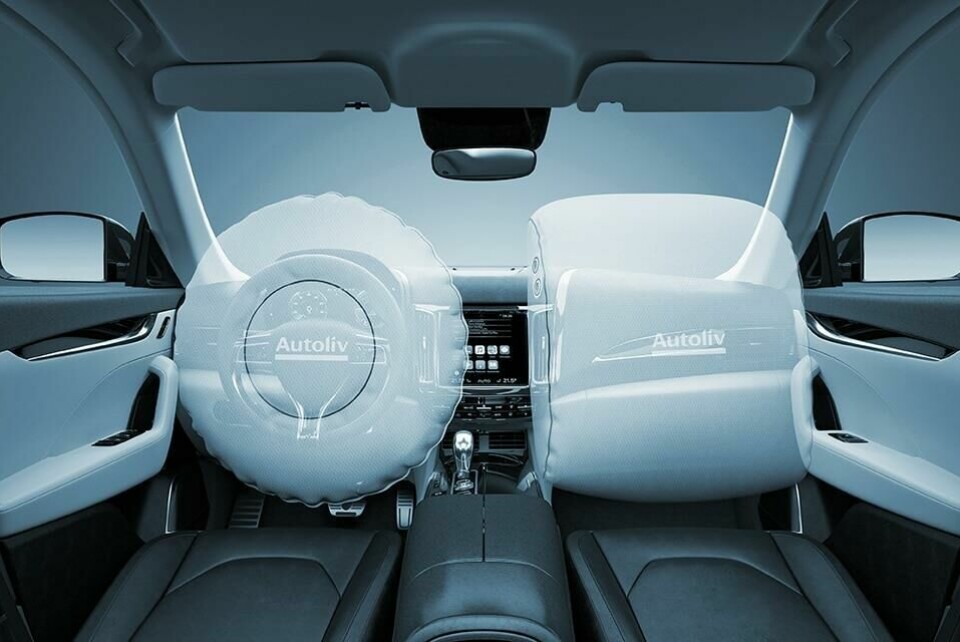Collaboration is at the heart of Autoliv’s supply chain digitalisation
Autoliv’s vice-president of global logistics, Dr Gisela Linge, tells Automotive Logistics why collaboration across functions and working agile helps to digitalise the supply chain faster and more effectively
Automotive safety system supplier Autoliv has appointed Gisela Linge as vice-president of its logistics division. Linge has an extensive background in digitalisation and since coming into the role she has set out specific aims to drive collaboration and digitalisation into the logistics organisation and make it fit for the future.

“Logistics sets the heartbeat of the supply chain, connecting suppliers, production and customers,” she tells Automotive Logistics. “Recent years have shown that this heartbeat can easily get out of sync, calling for more resilience, transparency, collaboration and digitalisation. It makes perfect sense for automotive companies to put more emphasis on this role.”
A rugby strategy for the supply chain
Before joining Autoliv, Linge worked in a variety of strategy, procurement and supply chain roles, including leading a product management team in aftersales at BMW. She was also director of corporate strategy for tier one supplier Webasto. For three years from 2019, she also led her own consultancy firm, having worked previously at consultancies Deloitte and McKinsey. Along with her experience at major manufacturers, Linge is a certified ‘scrum master’, a part of agile processes which she says is helpful when advancing digital transformation in logistics, especially to quickly drive change towards more cross-functional, end-to-end thinking.
Linge believes it is crucial to focus on Autoliv’s people and ensure that transparency doesn’t just stop with visibility on logistics data but is also extended end-to-end across functions. To do this, she employs the Scrum approach more broadly at Autoliv.
Aptly named after the rugby formation, the Scrum method is a way of agile working that Linge says empowers the team and fosters cross-functional collaboration, especially between IT and business functions – essential for successful digitalisation. These cross-functional teams virtually meet in “stand-ups” to align and drive the process via two-week sprints, setting themselves clear targets for each sprint to achieve their overall goals. As the methodology is new to many team members, trainings and communication are important. Digitalising the supply chain is a global endeavour and the teams are diverse, not only regarding gender, with 60% female members, but also across cultures, with people from nine different countries around the globe. “This global approach right from the beginning helps us align on process changes to create global standards that become the norm,” she says.
”We could have the best IT solution in the world, but if the user does not think it solves a problem for them it won’t make a difference”
In her current project the Scrum teams are supported by Autoliv’s corporate Accelerator Hub, which was founded this year to provide key enablers of a digital business transformation. The colleagues from the Accelerator Hub include scrum masters, agile coaches, change and communication experts, as well as data scientists and data-foundation teams. Moreover, the hub also oversees the alignment between business processes and IT architecture, ensuring an end-to-end perspective across functions. “We could have the best IT solution in the world, but if the user does not think it solves a problem for them it won’t make a difference,” she says. “There might be a difference between what management think is a problem and what the users actually experience. So, we include key users and change management experts to ensure we focus sufficiently on these aspects.”
Making AI work for people
Part of the changes at Autoliv include increasing the use of new technologies such as artificial intelligence (AI), as well as more advanced data, forecasting and automation tools. Linge explains: “As supply chains offer a lot of data to work with, we see more and more machine learning in various forms supporting demand forecasting, inventory management and route planning. Then there are autonomous technologies in warehouses and AGVs [automated guided vehicles] as well as the rather new development of mapping supply chain networks driven by the need for more transparency along the supply chain to account for scope 3 emissions and to meet regulatory and customer requirements.”

Scope 3 emissions are those not directly resulting from the activities of the company but those that the company is indirectly responsible for up and down its value chain.
Linge emphasises that the team can build on the great digitalisation work done by the supply chain management (SCM) and IT team in previous years, laying the foundation for exploring AI.
For Linge, communication can make all the difference in the effectiveness of implementing these new technologies. “People need time to trust it, and that’s why change management is important,” she states.
“When looking back at why digital transformations may have failed, many times it is due to too much focus on the digital solution itself and too little focus on the people side,” Linge continues. “That means AI will only develop its full potential when we are addressing it from a human perspective, adopting a culture shift. How does AI help users in their daily work? Which are the real pain points and benefits from a user perspective?”
As an example of this, Autoliv is currently looking at its supply chain planning process and how AI can help make better forecasts, automate process steps, and pinpoint the attention of planners to outliers, critical part numbers and customers. “That way, planners can benefit by being supported in their decision-making with proposals and data, and freeing up time to focus on value-add tasks,” she says. “But to do so, AI needs to earn the trust of the user which we try to gain by using back testing and working in parallel. It’s not about switching from human to machine, from one day to another, but rather the machine assisting the human.”
She adds that it’s still important in the logistics industry to trust our experiences: “Our planners have a lot of knowledge and we want to make sure we can combine that with the advantages technology can bring; that’s our ultimate goal. Digitalisation only works when it goes hand in hand with people that will use it.”
“Our planners have a lot of knowledge and we want to make sure we can combine that with the advantages technology can bring; that’s our ultimate goal”

Accelerating logistics
It is also important to ensure that key functions have the right resources and investment behind them. One of the ways Linge is helping to achieve this is through working with the company’s Accelerator Hub initiative, a central support team that works to align the company overall. Working in this way, Linge has been able to steer more focus and cross-functional support behind logistics and supply chain planning.
“One of the main problems regarding digitalisation was that there were too few people working on too many projects in parallel, similar to many other companies,” she explains. “It’s always the same people you go to, to solve problems. So, what we did at the beginning of this year was to prioritise key digitalisation initiatives across all functions. One of those priorities was supply chain planning and transparency, which I’m leading with a global, cross-functional team, and that’s why we benefit from the Accelerator.”
Through the connection of Linge’s team with the Accelerator Hub, the supply chain works with the sales, manufacturing, financial and IT teams to move in parallel, rather than separate from each other. She highlights that the Accelerator Hub looks at how digitalisation projects would potentially align with the overall firm’s process and IT architecture. “It gives us more end-to-end visibility,” she says.
For the supply chain specifically, Linge says this helps increase transparency of demand forecasting, production planning, inventory planning, and traceability of components and products.
Increasing transparency along the supply chain is necessary to reduce risks in an ever-changing, dynamic world and to comply with regulations and customer requests, Linge confirms. Industry-wide standards and collaboration that ensure the anonymity of key information when being shared (eg via blockchain) would be helpful to increase transparency without risking competitive advantages or antitrust issues.
“Gathering emission data within our own operations and logistics is important so that we can build digital solutions to account for our emissions and track our initiatives,” she says, “but we need to collaborate along the supply chain too.”





